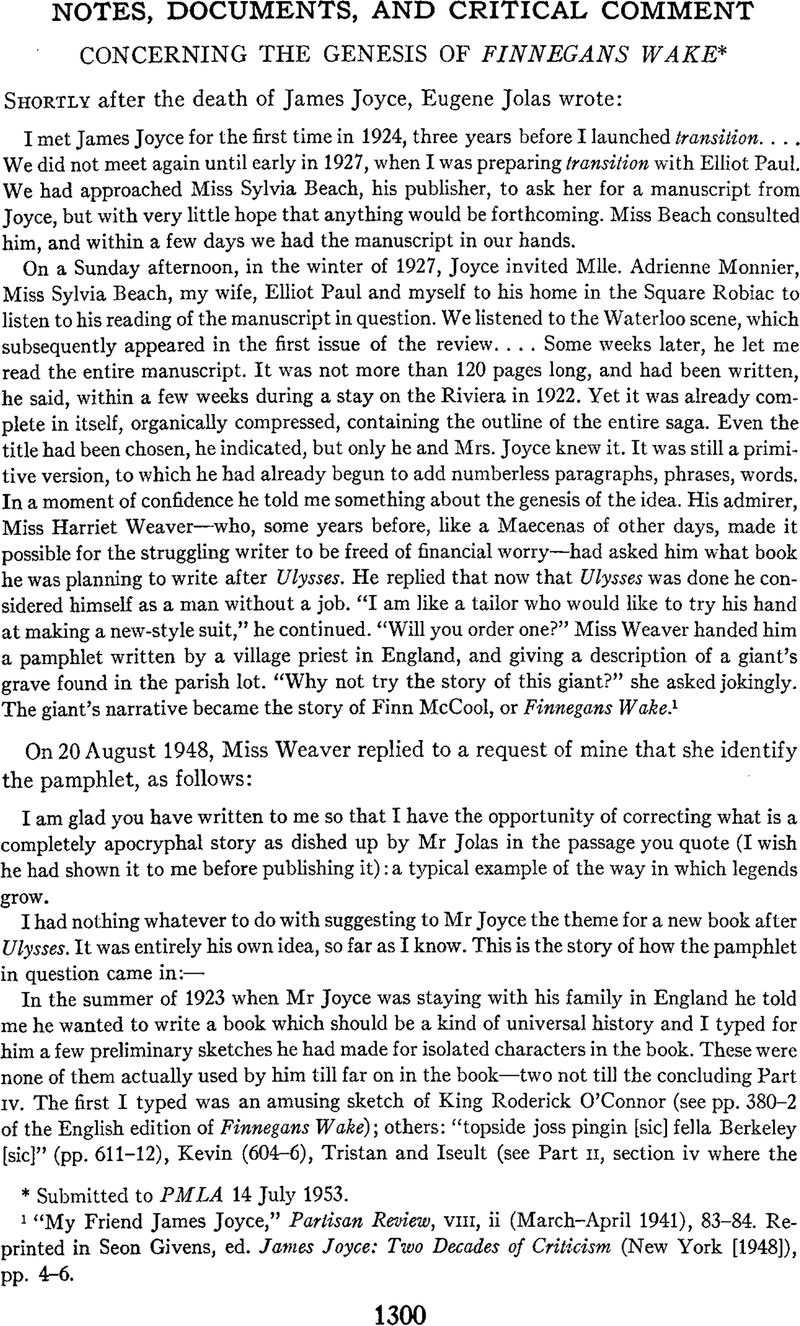No CrossRef data available.
Published online by Cambridge University Press: 02 December 2020

Submitted to PMLA 14 July 1953.
1 “My Friend James Joyce,” Partisan Review, viii, ii (March-April 1941), 83-84. Reprinted in Seon Givens, ed. James Joyce: Two Decades of Criticism (New York [1948]), pp. 4-6.
2 Miss Weaver has very kindly granted permission for the publication of her letters. Cf. John J. Slocum and Herbert Cahoon, A Bibliography of James Joyce [1882-1941] (New Haven, 1953), p. 145, describing the MS. of Finnegans Wake: “ii. Part i.i. This occurs at the end of a notebook containing Part iii.iv, dating from the autumn of 1926. Miss Weaver writes: ‘It is remotely founded on a paragraph about a giant's grave in a small pamphlet (now undiscoverable) on St. Andrew's Church, Penrith, Cumberland (written early in this century by the then vicar of the church and sent by me to Mr. Joyce in the early autumn of 1926). The pamphlet contained a mention of a curious barrow or mound in the churchyard which local tradition maintained was the burial place of a giant of prehistoric Britain.‘”
3 I am indebted to my colleague Prof. William White for searching for the pamphlet in Penrith and for putting me in touch with Mr. Hudleston.
4 For another garbled account of the genesis of Finnegans Wake in relation to what is presumably the Reverend Cropper's pamphlet, see James Joyce: Sa Vie, Son Œuvre, Son Rayonnement (Paris, 1949), between items 131 and 131 bis. For more on the history of the composition of Finnegans Wake, see Walton Litz, “The Genesis of Finnegans Wake,” N&Q, cxcviii, x (Oct. 1953), 445-447.
On 25 Jan. 1954, Mr. Gene Magner, Curator of the Poetry Collection at the Lockwood Memorial Library of the Univ. of Buffalo, informed me that Joyce's copy of the Penrith pamphlet had been found at the Lockwood Memorial Library among the thousands of press clippings which Joyce had had in his apartment.